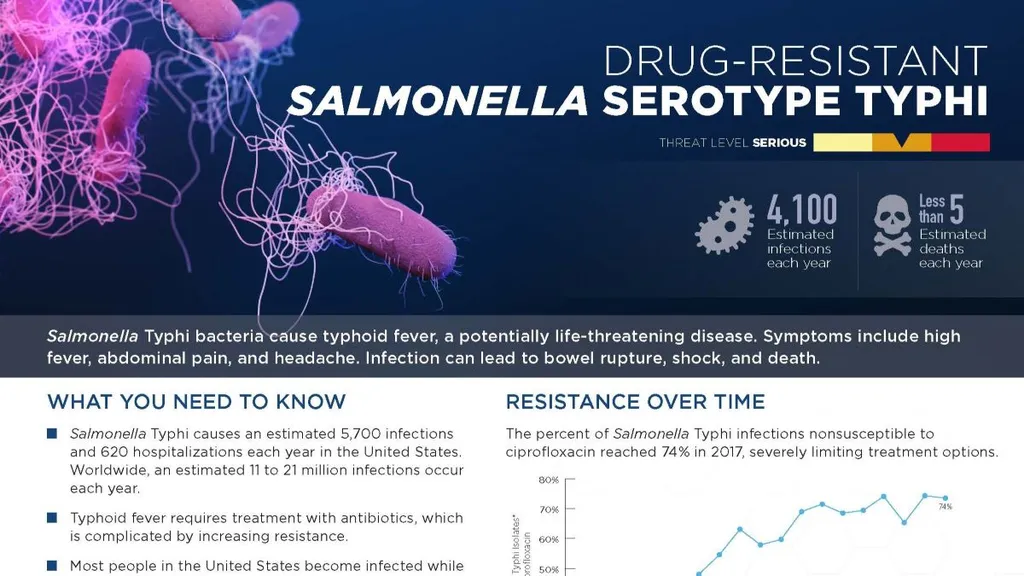In the sprawling landscapes of South Africa, a silent battle is raging—not against an invading army, but against a microscopic foe that threatens both human and animal health. Salmonella Typhimurium, a bacterium known for causing salmonellosis, is evolving, becoming more resistant to antibiotics and more virulent. A recent study published in the Onderstepoort Journal of Veterinary Research, which translates to the Veterinary Research Journal of Onderstepoort, has shed light on the alarming trends of this pathogen, with significant implications for public health, agriculture, and the broader economy.
The study, led by Nkagiseng Moatshe from the School of Interdisciplinary Research and Graduate Studies at the University of South Africa and the Department of Biotechnology at Onderstepoort Veterinary Research, examined 180 isolates of Salmonella Typhimurium collected from various sources across nine South African provinces between 1999 and 2021. Among these, 129 were confirmed as S. Typhimurium, originating from animals, food, environmental, and feed sources.
The findings are stark. High levels of antibiotic resistance were observed, with 86.8% of isolates resistant to ciprofloxacin, 69.0% to ceftriaxone, and 65.1% to piperacillin. Even more concerning, some isolates exhibited multidrug resistance, showing resistance to up to 11 different antibiotics. “The high levels of antibiotic resistance we’ve observed are a clear indication that current treatment regimens may be becoming less effective,” Moatshe noted.
Genetic analysis revealed the presence of various resistance genes, including blaPSE, blaCMY-2, tetA, tetB, qnrB, and qnrA. Class 1 integrons, genetic elements that can carry multiple resistance genes, were found in 47.4% of the isolates. These integrons can facilitate the spread of resistance genes among bacteria, exacerbating the problem of antibiotic resistance.
The study also investigated the presence of virulence genes, which contribute to the pathogenicity of the bacterium. Genes such as sopB, sspH1, sifA, pefA, spvC, sspH2, srgA, and invA were prevalent, indicating that these isolates are not only resistant to antibiotics but also potentially more virulent.
Plasmid analysis, which involves the study of small, extra-chromosomal DNA molecules, identified the presence of 2 kb, 8 kb, and 90 kb plasmids. The 90 kb plasmid was the most common, found in 71.3% of the isolates. These plasmids can carry multiple resistance and virulence genes, further enhancing the bacterium’s ability to cause disease and resist treatment.
Enterobacterial Repetitive Intergenic Consensus (ERIC) PCR, a technique used to study the genetic diversity of bacteria, identified 44 clusters among the isolates, including six major clusters. This genetic diversity suggests that S. Typhimurium populations in South Africa are evolving, with different strains potentially exhibiting varying levels of resistance and virulence.
The implications of these findings are significant. Salmonella Typhimurium is a major cause of human and animal salmonellosis, impacting global socioeconomic factors. In South Africa, the high levels of antibiotic resistance and virulence observed in this study pose a serious threat to public health and the agricultural sector.
“The high levels of antibiotic resistance and virulence we’ve observed are a clear indication that current treatment regimens may be becoming less effective,” Moatshe emphasized. “This underscores the urgent need for enhanced surveillance and intervention strategies to curb the spread of antibiotic resistance and virulence in S. Typhimurium populations.”
The study highlights the importance of monitoring and control measures to address this public health threat. Enhanced surveillance can help identify emerging resistance patterns and virulence factors, allowing for more targeted and effective intervention strategies. Additionally, the development of new antibiotics and alternative treatments, such as bacteriophages and probiotics, may be necessary to combat the growing threat of antibiotic resistance.
In the broader context, this research underscores the need for a One Health approach, which recognizes the interconnections between human, animal, and environmental health. By addressing the issue of antibiotic resistance in a holistic manner, we can better protect both human and animal populations, as well as the environment.
As we look to the future, the findings of this study serve as a stark reminder of the ongoing battle against antibiotic resistance. The high levels of resistance and virulence observed in S. Typhimurium populations in South Africa are a call to action, urging us to redouble our efforts in the fight against this microscopic foe. Through enhanced surveillance, targeted intervention strategies, and the development of new treatments, we can hope to curb the spread of antibiotic resistance and protect the health of both humans and animals.
In the words

